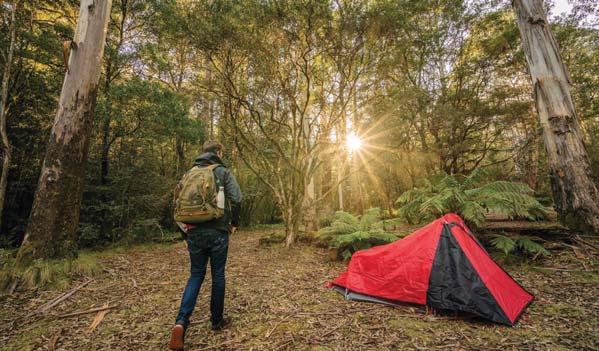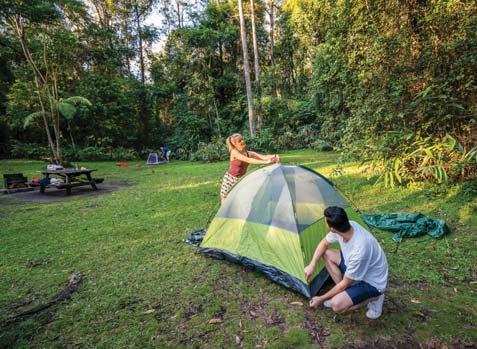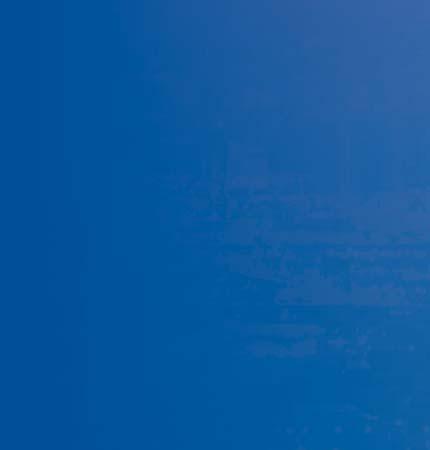
15 minute read
Family Business

Welcome Welcome to KPMG Family Business feature articles. If you would like to discuss these articles or how KPMG can help with your business please feel free to contact me on 8865 6117 or pwakim@kpmg.com.au
Mid-market businesses upbeat and confidently emerging from COVID-19
CLIVE BIRD

AUSTRALIA’S mid-market businesses are upbeat, and markedly less worried about the ending of the JobKeeper program than they were six months
ago.
KPMG Enterprise’s pre-budget survey paints a signifi cantly diff erent picture from our last survey, carried out just ahead of the October 2020 Budget.
Th e survey of 100 mid-tier business leaders and directors found two-thirds (68 percent) had either used government support through COVID and were ‘emerging with confi dence’ or said that new opportunities had emerged as a direct result of the past year’s experience. Less than half responded that COVID-19 or other factors had negatively impacted their business.
Notably, only one-third of respondents expected the ending of JobKeeper to lead to a signifi cant decline in economic activity and higher unemployment – this compared to two-thirds in our last survey. Almost one-half had used JobKeeper.
In encouraging signs for future growth and innovation, one third took advantage of the Instant Asset Write-off and plan to follow suit with the R&D Tax Incentive.
It was positive to see strong support for innovation measures like the early stage investor incentive; innovation tax incentive; soft ware-specifi c development and collaboration premiums. Th e government’s e-invoicing program was also largely welcomed, increasing both productivity and effi ciency.
Of course, there are still challenges. Th e biggest, once again, was cost and margin pressures, followed by supply chain problems and recruiting skilled staff . Reduced revenue and demand, and changes to consumer spending were also prominent issues.
At some point the debate will turn to paying back Australia’s COVID-related debts. Our clients favoured moves to raise productivity as the best way to do this with major tax reform also playing a role.
No-one wants tax rises, but if there must be one, then GST was the preferred
– Clive Bird.
option. No doubt, this is diffi cult territory, but it reinforces the view that Australia already has an over-reliance on direct taxes.
Th e mid-tier sector also favoured the two-tiered company tax-rate system remaining, under which smaller companies pay a lower 25 percent rate – until public fi nances allowed the higher rate for larger companies to come down.
Th e debts and the emergence from COVID-19 have seen a signifi cant ramp-up in ATO compliance activity. ATO programs directed at the top 500 and ‘next 5000’ privately-owned groups, as part of its wider Justifi ed Trust tax assurance program aimed at Australian businesses and wealthy family groups, are now in full swing; understandably the survey found 50 percent concerned about this.
I was concerned that nearly half the respondents stated they are well prepared for the additional compliance activity – despite nearly two-thirds saying they do not currently have documented tax risk management frameworks.
Th ese systems are a key part of proper tax governance in the eyes of the ATO and in my view some businesses have a degree of unfounded optimism about their state of readiness.
Finally, there was signifi cant support for ownership succession to take place in family businesses without tax implications.
Th is is a curious anomaly of the Australian tax system which eff ectively penalises organised succession planning in family companies while the owner is alive yet there is no tax impact on transfer when they die.
KPMG research has shown that Australia is an outlier and we need to change our approach to give a boost to family-owned enterprises.
Our survey shows Australia’s mid-tier businesses are up for the challenge, but we need to change our approach to give a boost to family-owned enterprises – which comprise around two-thirds of all businesses – as they emerge from COVID-19.
It is important that the tax system doesn’t make that harder.

To read the full report visit KPMG.com.au First published by Clive Bird, Partner, Head of Tax, Enterprise, KPMG Australia on KPMG Newsroom on 21 April 2021.


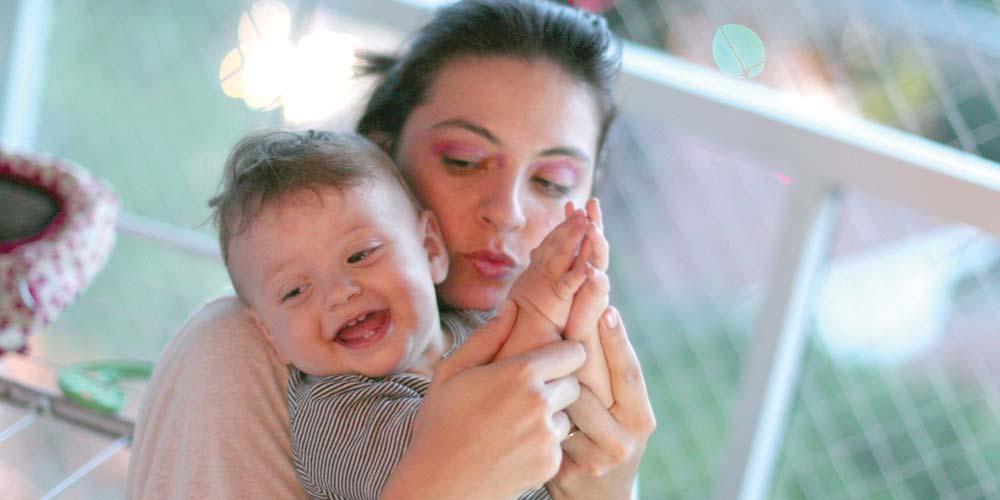
GRANT WARDELL-JOHNSON ALISON KITCHEN
MOVING away from the old ‘primary carer/secondary carer’ model of Paid Parental Leave (PPL) and to a system based on gender equity principles should be an aim of policymakers, moving forward.
In a report developed by KPMG in association with the Business Council of Australia’s Women’s Participation Taskforce, we propose important changes which will help with a wider move towards equal parental responsibility for child-raising.
Under KPMG’s proposed scheme, the available 20 weeks of paid leave would be split according to what best suits the parents’ lifestyle, eff ectively ending the status quo where the birth Mother is eligible for 18 of these weeks while the other parent having to make do with just two.
Th e total number of weeks would also increase to 26 weeks over six years, rising by two weeks every two years.
Our proposal also outlines an ‘equality supplement’, where bonus weeks are awarded to the extent that responsibility for care is shared more equally.
Carer weeks allocated evenly
If the nominated carer weeks were allocated evenly, within a 55/45 per cent range, then each parent would receive two additional weeks of leave. If the split was within, for example, 65/35 per cent, then each parent would receive one additional week.
Our estimates indicate that by the time this proposal reaches year six, it would cost the government approximately $1.1B. Despite this, the measure would contribute to decreasing the workforce participation gap between men and women.
Th e report’s principles underpinning a revamped scheme of government-funded parental leave include: • Th e system should have a component which is based on a non-transferrable individual right rather than only a family right. • Th e scheme should not be gender-based in legal form and should cater for same-sex relationships • Individual rights should operate on a ‘use it or lose it’ basis to promote take-up of the leave and should not be available to be realised in the form of a diff erent benefi t. • Benefi ts of the government scheme should be additional to any benefi ts provided by an employer scheme and not be reduced because of this. • Th e scheme should incentivise parental care arrangements that are more equal. Th is could take the form of additional paid leave or greater fl exibility. •Th e ‘use it or lose it’ period should be two years from the birth of the child.
To read the full report, please visit KPMG.com.au First published by Alison Kitchen, National Chairman KPMG Australia and Grant Wardell-Johnson, Lead Tax Partner, KPMG Economics & Tax Centre, KPMG Australia on KPMG Newsroom on 8 April 2021
Sharpening the focus on risk for FBs
BERNADEENE CANGELOSI
FOR nearly all family offices, the events of 2020 certainly didn’t kickstart the decade in the way they may have envisaged. In a year where the nation suffered both environmental and economic shocks, resilience was certainly put to the test.
While the depth of fi nancial resources, combined with the maturity of the family’s social capital signifi cantly contributed to overcoming the calamities of the year, importantly, the benefi t of having in place an eff ective risk management framework emerged.
Whilst eff ective risk management has been a cornerstone of operations of the family business for generations, last year saw the importance of having a plan for risks that sit outside this scope. Now in a time of unparalleled change, enterprises need to double-down on these systems.
Th ere are several reasons for this.
Wealth transfer planning
Recognising the importance of planning for inter-generational wealth transitions has highlighted the ‘risks’ to succession. Unless appropriate forethought and planning has been undertaken, wealth transition amongst generations isn’t transparent.
Failure to innovate and change
Secondly, failure to ‘change’ and innovate carries with it the ‘risk’ of dissipated energy. Oft en this leads to the ‘risk’ of inter-generational confl ict as misunderstandings emerge as to how an individual and their family think their energy should be applied. Th is has become increasingly relevant not just in relation to how fi nancial capital is managed, but also the way that individual family members discuss their own education and development as part of the family enterprise.
Privacy
Th irdly, even though the internet in many ways has liberated the transfer of information and knowledge which has in-turn encouraged innovation – it has also further jeopardised privacy. As a person or families’ success begins to become public knowledge, their level of cyber risk grows.
It’s key there is a robust plan for security and social engagement. A family’s privacy can be protected in these from both third-party scrutiny and from its own failings and subsequent inadvertent publicity.
Family offi ces also need to develop their own risk management frameworks. Th e framework should include risks to achievement of purpose and mission, implementation of strategy, transition of ownership and wealth, capacity for change in leadership and control and allocation of ‘risk’ in portfolio management.
You can begin the process by understanding the risks your family faces and establishing a forum that allows discussion of what needs to be included.
It’s important, in doing so, to consult with family members about their own personal liabilities and identify where those risks may have an impact on wider family relationships. A prime example being discussions around the role of ‘binding fi nancial agreements.
By prioritising risks, by likelihood and impact, family offi ces can begin to develop relevant mitigating strategies.
It is not the case that all risks can or indeed should be eliminated – the CIO will need to take a certain level of investment risk to maintain the capacity of the family’s fi nancial capital to generate suffi cient returns to meet the family’s needs.
By creating an awareness of the nature of the risks facing the family and discussing what the impact of that risk is on a family’s future, collectively – the family offi ce has fulfi lled one its most important functions.
Roadshow of mobile tradie workshops
ELIZABETH FRIAS
THE welding helmet seemed too big for the head and the tools too heavy for the hands yet the students from Parramatta Marist College wearing high-vis gear, as shown in the photo, prove they have got what it takes for future technical trades jobs.
At a school holiday “welding camp” recently held for PMC’s youngest high school students at Precision Metal Group (PMG) workshop at Wetherill Park, the experience ignited interest from students and their parents.
Th e idea of a camp kickstarted last October and will be replicated at high schools across Western Sydney as part of a massive industry-led recruitment program for young people across NSW to try an engineering trade as skills shortage is decried by industries.
“Running a school holiday program for everyone in high school from Year 7 onwards to give them an understanding of a career path they can start working towards gives our young people hands-on experience in industries similar to ours,” says PMG chief executive, Jason Elias.
“It’s engaging schools, parents and students but more about giving exposure to students to understand there is a broad industry waiting for them to skill up and employ them soon as they are ready to be on the job.”
Mr Elias says PMG is working alongside the NSW Department of Education and the Vocational Education and Training (VET) sector to conduct schools-based training and att ract youths to go into engineering trades apprenticeships.
Last March, the NSW government embarked on a wide-ranging reform of the VET sector to improve the quality and eff ectiveness of vocational education in high schools.
Th e reforms, recommended by professors David Gonski and Peter Shergold who both conducted the review of the VET sector, included the participation of industry experts in formulating VET courses curriculums.
Th e Minister for Skills and Tertiary Education, Geoff Lee, State Member for Parramatt a says the recommendations “elevated the NSW VET system to an enviable standard.”
“Our VET sector has already led the way in training frontline workers who have safeguarded our economy from the eff ects of a global pandemic and today’s announcement will further bolster the sector to a worldclass standard,” says Dr Lee.

The first batch of high school students from Parramatta Marist College take hands-on experience at an actual engineering manufacturing at Precision Metal Group workshop in Wetherill Park, with PMG chief executive, Jason Elias.
Reducing the skills shortage
Mr Elias says industry expertise in training the future workforce on vocational trades they need is crucial to reducing skills shortage as the Gonski-Shergold VET report has highlighted.
“Th is camp is a partnership between schools, parents, students and industry to show them that there is an emerging industry technology that we want to expose our students to get them into trades’ jobs,” he says.
“Engineering, fabrication and welding are all vocational training courses and pathways to apprenticeships that are ready to take on roles to be fi lled.
“We want to reassure parents of students that their children are learning new technologies in engineering and those who have attended our holiday camps have understood the concept and the urgent need for skilling our young ones for jobs in industries.”
Mobile engineering workshops will soon roll out in high schools without available facilities.
Mr Elias says PMG is “retro-fi tt ing” a shipping container with welding and fabricating equipment that will be dropped off at participating high schools for a maximum of two weeks.
Th e mobile workshop will be moving school to school across Sydney and as far as Lithgow.
“We will be on a roadshow towards the end of this year to expose our students to hands-on experience with the virtual reality of welding and fabricating to give them a taste what is an engineering and manufacturing concept is,” Mr Elias said.
GROW & CONNECT
COMING SOON TO PARRAMATTA | BLACKTOWN | PENRITH


National Parks offer many options for the weekend getaway,
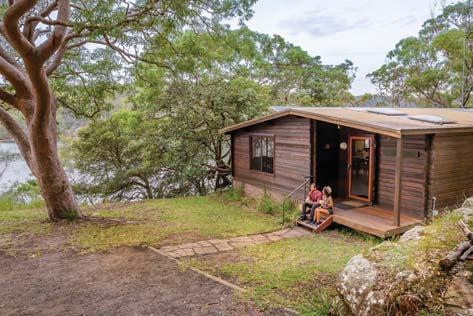

Making mid-week your own weekend
TRAVEL EDITOR
DALLAS SHERRINGHAM
IF you are looking for a quiet relaxing getaway far from the maddening crowds, why not take a weekday snort stay in a National.
Th e good thing is, you don’t to drive for hours, there a National Park stays available in and around Sydney in surprising places.
And the National Park service has switched to digital passes, which makes it even easier. It is a good way to save up to 50% off stays in NSW national parks.
NSW National Parks and Wildlife Service (NPWS) has launched a special off er to make mid-week trips the new go-to for travellers seeking some quality time in the great outdoors.
Visitors can save 50% off selected full-priced campgrounds and 25% off selected full-priced cabins and cott ages when booking to stay mid-week Monday – Th ursday.
With NSW national park stays in high demand on weekends, mid-week is the ideal time to experience the unique, secluded feeling of waking up surrounded by nature, without the crowds.
Escape for an aff ordable short break or embark on a longer road trip and discover the lush rainforests, pristine coast and vibrant country heritage that NSW has to off er.
Pitch a tent at Gambells Rest campground in the bushland of the Southern Highlands, Sheepstation Creek campground among World-Heritage listed rainforest on the far north coast, or beside a fl owing river at Gloucester River campground at Barrington Tops.
Sleep perched on one of NSW’s most sought-aft er headlands at Cape Byron’s Assistant Lighthouse Keepers’ Cott ages, soak up the history of the gold rush at Hill End, near Mudgee, staying in revamped heritage building Hosies, or book one of the cozy Wombeyan Caves cabins to explore underground wonders.
Discover the full list of participating campgrounds and accommodation at nswparks.info/specialoff ers
To take advantage of this special off er, book now using the promo code MIDWEEK via the NPWS website.
Just do it, I guarantee you’ll have a great time.
